#ISRAEL CARMONA
Explore tagged Tumblr posts
Text
#Dobleces | Flores al Cuauh
Israel Mendoza Pérez | @imendozape El diputado morenista y exfutbolista Cuauhtémoc Blanco se encuentra en capilla. Su futuro legislativo está en manos de sus dos rivales acérrimos: el fiscal morelense, Uriel Carmona, y su exsocio político y compañero de bancada, Hugo Eric Flores Cervantes. Ambos, en una acción concertada, llevan al examericanista en camino al desafuero. Las denuncias por el…
0 notes
Text
Más de 94.000 euros para Valencia en la subasta de las guitarras solidarias
Más de 94.000 euros para Valencia en la subasta de las guitarras solidarias https://ift.tt/csu5CrE En la subasta, organizada por la Fundación Músicos por la Salud, en colaboración con el periodista Tony Aguilar, se han realizado 27.728 pujas por las guitarras de 65 artistas españoles e internacionales El dinero recibido irá destinado íntegramente a la rehabilitación de inmuebles y la recuperación del mobiliario de centros de día, escuelas de música y espacios dedicados a colectivos vulnerables (mayores y personas con diversidad funcional) que han sufrido daños por la DANA La Fundación Músicos por la Salud ha recaudado 94.466 euros en la subasta solidaria de guitarras de 65 artistas, en la que durante dos semanas se ha podido pujar online con el objetivo de recaudar dinero para los afectados por la DANA. En concreto, el dinero recaudado en las 27.728 pujas realizadas irá íntegramente a la rehabilitación de inmuebles y la recuperación del mobiliario de centros de día, escuelas de música y espacios dedicados a colectivos vulnerables, incluidos centros para personas mayores, con diversidad funcional y colectivos musicales de los municipios afectados, que hayan sufrido daños en su centros sociosanitarios y/o musicales, mobiliario, enseres como consecuencia de los daños ocasionados por las inundaciones del día 29 de octubre de 2024. Los interesados deberán presentar sus solicitudes a partir del día 7 de enero de 2025 y el plazo estará abierto durante un máximo de 1 mes desde esa fecha. Se analizará y resolverá cada propuesta según su orden de entrada en el registro de la entidad. La presentación de las solicitudes será a través del formulario habilitado para la tramitación electrónica, que estará disponible en la página web de la Fundación https://ift.tt/LerS3ZP. Se adjuntará solicitud de acuerdo con las bases de la convocatoria que se encontrará en dicha página web. {loadmoduleid 146} Las iniciativas serán estudiadas por un Comité constituido por Guillermo Giner, Patrono Fundador de Músicos por la Salud en colaboración con el locutor y presentador Tony Aguilar y algunos de los artistas que han donado sus guitarras. Músicos por la Salud y Tony Aguilar quieren agradecer a todos los artistas su participación en la iniciativa: Alejandro Sanz, Álex Márquez, Álex Ubago, Alfred García, Álvaro de Luna, Álvaro Mayo, Amaia Montero, Andrés Suárez, Antonio Carmona, Antonio Orozco, Antoñito Molina, Arde Bogotá, Beret, Bombai, Camilo, Carlos Baute, Carlos de Guitarra Viva, Carlos Goñi, Celia Becks, Chiara Oliver, Conchita, Dani Fernández, David Otero, Denna, DePol, Estopa, Fran Perea, Gypsy kings, Hombres G, Isma Romero, Ismael Serrano, Israel Fernández, Izaro, Javi Chapela, Juanjo Bona, La La Love You, La Oreja de Van Gogh, Lemot, Lérica, Alfonso Aguado de Los Inhumanos, Los Secretos, Marlena, Marlon, Mau y Ricky, Miguel Poveda, Mikel Erentxun, Miriam Rodríguez, Nebulossa, Nerea Rodríguez, Nil Moliner, Niño de Elche, Paula Koops, Paul Thin, Pol Granch, Robbie Williams, Rozalén, Ruslana, Ruth Lorenzo, Salma, Seguridad Social, Siloé, Sole Giménez, Veintiuno, Violeta Hodar y Viva Suecia. Agradecimiento que se extiende a las numerosas empresas que han colaborado en la causa: Fundación SEUR, Regus, Admira Guitars, Guitarras Esteve, Guitarras MR Manuel Rodríguez, Guitarras Bros, Alhambra Guitarras, Admira Alba, UME Unión Musical, el Palau de la Música, todocoleccion, Picnic, Safe Trip y Sagarmanta Experience. Todos juntos hemos conseguido transformar el dolor en esperanza y contribuir a recuperar la vida de los afectados en la Comunidad Valenciana por la DANA. via Música https://ift.tt/J1NfiPy December 29, 2024 at 09:23AM
0 notes
Text

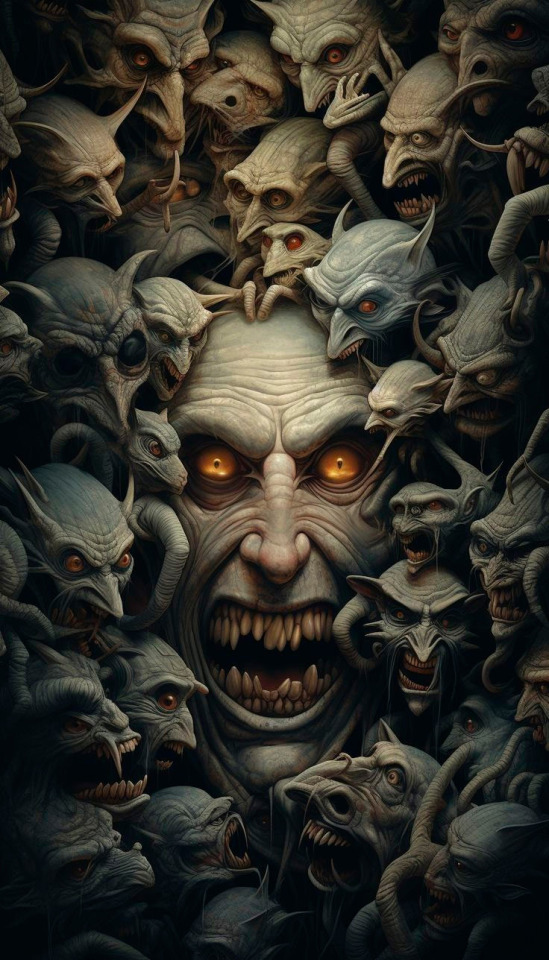

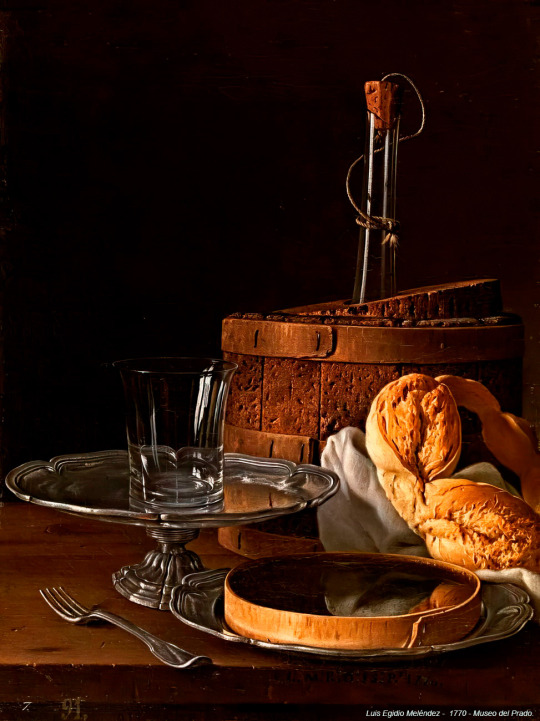
IMAGENES Y DATOS INTERESANTES DEL DIA 13 DE ABRIL DE 2024
Día Internacional del Beso, Día de Concienciación de la Sarcoidosis, Día Mundial del Scrabble, Año Internacional de los Camélidos.
San Martín I.
Tal día como hoy en el año 2002
En Venezuela fracasa el golpe de Estado militar, que el día anterior ha colocado al empresario Pedro Carmona Estanga como presidente interino del país, restableciendo al depuesto Hugo Chávez en la presidencia. (Hace 22 años)
1975
Comienza una cruenta guerra civil en Líbano, entre cristianos y musulmanes, que durará 15 años y con intervenciones de Israel y Siria con intereses en la zona. (Hace 49 años)
1943
Coincidiendo con el 200 aniversario de su nacimiento, en Washington DC (EE.UU.), se inaugura el Thomas Jefferson Memorial. (Hace 81 años)
1941
Japón alcanza un pacto de neutralidad con la Unión Soviética durante la II Guerra Mundial. (Hace 83 años)
1813
José Gervasio Artigas, desde su campamento situado cerca del arroyo Ayuí Grande, a pocos kilómetros al norte de la actual ciudad entrerriana de Concordia (en la actual República Argentina), dicta y envía a Buenos Aires sus famosas "Instrucciones", un programa que representa una justa interpretación del movimiento revolucionario que dará la independencia a América en el que reclama la Declaración de Independencia del poder español, libertad civil y religiosa, organización política federativa, Estados autónomos, igualdad de las provincias a través de un pacto recíproco y, por último, que Buenos Aires no sea la sede del gobierno central. Los diplomas de los diputados orientales serán rechazados por la Asamblea, usando como argumento legal la nulidad de su elección. (Hace 211 años)
1742
En un concierto con fines caritativos y ante 700 personas se estrena en Dublín (Irlanda) "El Mesías", una meditación sobre la vida de Cristo, del gran compositor inglés, de origen alemán, Georg Friedrich Händel. (Hace 282 años)
1640
Por primera vez desde 1628, el rey Carlos I de Inglaterra convoca al Parlamento para que apruebe la financiación de la guerra contra los separatistas escoceses. Al existir insalvables contrastes entre la Corona y el Parlamento, Carlos I procede a su disolución. (Hace 384 años)
1598
El rey Enrique IV de Francia promulga el Edicto de Nantes, en Bretaña, mediante el que se reconoce el protestantismo como una religión y no como herejía y se concede un amplio grado de libertad religiosa a los hugonotes, terminando por tanto con las Guerras de Religión de Francia. Los católicos no lo reciben con agrado y el poder del Estado sale bastante reforzado. (Hace 426 años)
1534
En Londres, Inglaterra, el humanista y cardenal inglés Tomás Moro, autor del libro Utopía, se niega a firmar el acta que reconoce a Enrique VIII como jefe de la iglesia y a consentir su divorcio de Catalina de Aragón. Por ello será acusado de alta traición, encarcelado en la Torrre de Londres y decapitado un año más tarde. (Hace 490 años)
0 notes
Text
ESPAÑA: Soul Teller, un español de Memphis
ESPAÑA: Soul Teller, un español de Memphis
Teresa Fernández Herrera Prensa Especializada Así fue y así nos pareció el concierto del pasado sábado 18 de septiembre en la carpa del Mentidero de Madrid, del Soul Teller (Contando historias con alma) Miguel Ángel Julián, cantante, showman, actor, activador de fans y todo lo que se os ocurra. Porque el porcentaje en tiempo de canto y de todo lo demás no está medido. ¡Ay cuando pidió ese…

View On WordPress
#ALICIA ARGUIÑANO#ESPAÑA#HENAR RODRIGUEZ#ISRAEL CARMONA#KIKE EIZAGUIRRE#LAS CANCIONES DEL CONCIERTO#lomasleido#lomasvisto#MIGUEL ANGEL JULIÁN#SOUL TELLER#TERESA FERNANDEZ HERRERA MEJOR PRENSA ESPECIALIZADA 2020#UN ESPAÑOL EN MEMPHIS
0 notes
Quote
God, being omniscient, held Jephthah to a very unfortunate promise in Judges 11. Jephthah vowed that if God granted him victory over the Ammonites, he would offer the first thing that came out of his home to meet him as a burnt sacrifice. Despite having the capacity to see that the first person that would greet Jephthah is his daughter, God held him to his promise anyway. This is to say nothing of the strange fixation on her virginity, which she and her friends lamented over. Never mind that it became a custom for the Israelites to take four days out of the year to mourn for her. Worse still is that for all the clamor among Christians concerning being pro-life, they routinely ignore passages like Hosea 9:11-16 in where God takes issue with Ephraim’s, a tribe of Israel, pride. He wants to “Give them a miscarrying womb and dry breasts” and even if they somehow manage to give birth to live children, he “will put their beloved children to death.” Later in Hosea 13:16, he takes similar issue with the Samarians and promises that “their little ones shall be dashed in pieces and their pregnant women ripped open.” Since there is no allegorical rendering of such passages available, assuming any such interpretation is even possible, and since we are prohibited from writing these stories off as mythology, we have no choice but to conclude that God performed lethal abortions. In any case, none of these heinous acts befit a morally perfect being.
R.N. Carmona “The Definitive Case Against Christianity: Life After The Death Of God”
23 notes
·
View notes
Text
La Luz del Mundo y el "Apóstol de Cristo".
06 de agosto 2020.
La Luz del Mundo es una organización de carácter religioso que actualmente enfrenta el peor escándalo de su historia con la detención de su líder, Naasón Joaquín García "El Apóstol de Cristo", por cargos como pornografía infantil y abuso sexual.
La cercanía de grupos religiosos al poder no es nueva, en México hasta peleamos unaguerra intestina para lograr la separación del clero y el Estado; pero algo tiene de particular la Iglesia de la Luz del Mundo que la hace diferente a lo que la Iglesia católica nos tieneacostumbrados: desde el culto al “Apóstol de Jesucristo”, hasta el cuidado que ha tenido la organización de introducir a la estructura política en todos los partidos políticos a sus elementos.
Desde su nacimiento, en plena Guerra Cristera, como una “Iglesia mexicana” que se cuadró inmediatamente a las órdenes de Plutarco Elías Calles, en el epicentro de la guerra, en Jalisco, en 1926.
La Iglesia se asentó en el estado y, como se reporta en múltiples investigaciones, amplió su vínculo con el priísmo local: alcaldes, gobiernos, legisladores del Revolucionario Institucional fueron miembros de la secta o produjeron cambios o “espacios” legales para que operara con libertad.
Iglesia del Dios Vivo, Columna y Apoyo de la Verdad, La Luz del Mundo es el nombre oficial de este culto fundado en 1926 por Eusebio Joaquín González "Apóstol Aarón Joaquín González", el abuelo de Naasón Joaquín García.

El mexicano nacido cerca de Guadalajara dijo que tuvo una epifanía en la que Jesucristo le dijo:
"Tu nombre será Aarón, lo haré notorio por todo el mundo y será bendición".
Por aquellos años de su fundación, en México se desató la Guerra Cristera, un conflicto armado entre el gobierno de México y la Iglesia católica surgido de la aprobación de leyes anticlericales.
Para "contrarrestar la presencia católica", otras religiones como la Luz del Mundo recibieron un fuerte apoyo del presidente Plutarco Elías Calles.
La "disciplina" de Eusebio Joaquín González, de su militancia y la "fuerza social" sirvieron como un intercambio político con el gobierno para obtener apoyos de todo tipo. Ya que por aquellas épocas era un militar destacado.
En la década de 1940, el gobernador Marcelino García Barragán cedió un terreno de 15 hectáreas en el que la iglesia de Eusebio Joaquín creó la "Hermosa Provincia", un barrio de Guadalajara.
En el centro de la colonia posteriormente se construyó el templo de 80 metros de altura que domina el horizonte del este de la ciudad.

La importante presencia de La Luz del Mundo en Jalisco ha tenido un peso histórico en los relevos del gobierno del estado.
El escándalo en Palacio de Bellas Artes.
El senador por el Partido Verde Ecologista y responsable del cabildeo para la “renta” del inmueble, para el concierto homenaje que el Instituto Nacional de Bellas Artes y Literatura, organizó para Naason Joaquín García, fue Rogelio Israel Zamora, en compañía de Emmanuel Reyes Carmona, otro legislador federal, quienes abiertamente se dicen fieles seguidores de la secta, y son el enlace entre la Luz del Mundo y la clase política federal.
Los lazos de la Luz del Mundo con Movimiento Ciudadano en Jalisco son tan públicos que sirvieron, por ejemplo, para que le rindieran un homenaje en la Cámara de Diputados al ahora acusado por 36 cargos de violación, pornografía infantil, abuso sexual y trata de personas.

A partir de la gestión de la diputada de MC por el distrito 11, en Guadalajara, Jalisco, Kehila Ku, 35 diputados federales “en representación de 32 estados del país” le entregaron un reconocimiento por su “labor social que es muy extensa y en diversos ámbitos”.
Luz del Mundo es una iglesia pensada desde y para el poder político.
La detención de Naasón Joaquín García, líder de la Iglesia de la Luz del Mundo, ha generado muchas dudas sobre su cercanía con el poder político en México, pero especialmente en Jalisco. Eso no es casualidad: son una iglesia pensada por y para hacerse de él.

Luego de la detención en California de Naasón Joaquín García, “El Apóstol de Cristo” y líder de la Iglesia de la Luz del Mundo, comenzaron a publicarse en redes sociales múltiples fotos de la jerarquía de la iglesia con personalidades de la política nacional: desde los legisladores de Morena en su (no) homenaje de Bellas Artes, Sergio Mayer y Martí Batres, hasta Enrique Alfaro, actual gobernador de Jalisco, y Margarita Zavala.

Entre 1997 y 2004 quedaron documentadas en varios medios de comunicación denuncias contra Samuel Joaquín Flores, o apóstol Samuel, (padre de Naasón) por presuntos actos de abuso sexual en agravio de integrantes de la agrupación.

Sin embargo, en México nunca se iniciaron investigaciones al interior de la Luz del Mundo ni contra sus líderes, a pesar de toda la evidencia reunida por sendas investigaciones criminales.
Las investigaciones periodísticas contra los dos líderes son fácilmente localizables en internet, por lo que el argumento que varios vinculados a la Iglesia y a Naasón Joaquín García de que “no se conocía en su momento” es, cuando menos, parcial o falaz.
Tras ser detenido, un Juez de la Corte Superior de Los Ángeles, Estados Unidos, negó derecho de libertad bajo fianza a Naasón Joaquín García, líder de la iglesia La Luz del Mundo y deberá enfrentar en reclusión las 26 acusaciones por violación infantil, violación de asalto sexual agraviado, abuso sexual, trata de personas, pornografía sexual y extorsión.
Después le impusieron una multa de 50 millones de dólares, luego de 75 millones de dólares, actualmente es acusado de 10 cargos más, que suman 36 y se le fijó una nueva fianza de 90 millones de dólares para seguir su proceso en libertad, en caso de no tomar la fianza, deberá seguir el proceso y un posible juicio, con el uniforme color naranja.
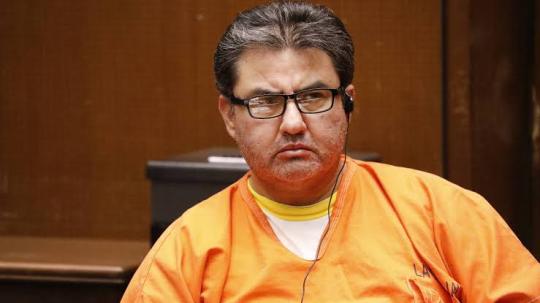
Quien iba a pensar que su cercanía con Movimiento Ciudadano lo iba a convertir en "The New Orange", le acomoda el color, espero ver a los demás militantes del partido portando el mismo uniforme naranja.
Espero que la generosidad del gobernador Enrique Alfaro, no sirva para cooperar con fondos para hacer la vaquita de los 90 millones de dólares que necesita su amigo para estar fuera de prisión.
By Hugo González
2 notes
·
View notes
Text
STUDENTE INVENTA L’ASFALTO CHE RIPARA DA SOLO LE BUCHE

Un giovane studente messicano dell’Universidad Autónoma de Coahuila ha inventato un nuovo tipo di asfalto che sfrutta l'acqua come catalizzatore per auto-ripararsi e ricicla i rifiuti di pneumatici come componente principale per il suo manto.
Israel Antonio Briseño Carmona ha condotto per diversi anni la sua ricerca con l’obiettivo di risolvere il problema del suo Paese, il Messico, in cui buche e crepe nelle strade sono molto frequenti, provocate dai cedimenti dell'asfalto per le piogge sono molto frequenti. "Il danno è causato dalla pioggia che filtra alla base dei marciapiedi, indebolendola e creando cedimenti". Il suo Paflec (Pavimento de Goma Autorregenerativo) è il primo asfalto auto-riparante che con la sola acqua piovana assorbita dal pavimento può riparare le crepe, sfruttando gli elementi dell’acqua come catalizzatore per la rigenerazione in modo che - invece di costruire strade che si sgretolano lentamente quando sono esposte a condizioni meteorologiche avverse - la miscela stradale produca silicati di calcio che mantengono l‘asfalto sempre riparato.
La sua invenzione trasforma la pioggia da più grande agente di degradazione in un agente di recupero e gli ha permesso di vincere il premio James Dyson che ogni anno seleziona i 20 migliori progetti internazionali di design di ingegneria innovativa in tutto il mondo.
______________________
Fonte: James Dyson Award - 22 giugno 2020

✔ VERIFICATO ALLA FONTE | Guarda il protocollo di Fact cheching delle notizie di Mezzopieno
✖ BUONE NOTIZIE CAMBIANO IL MONDO. Firma la petizione per avere più informazione positiva in giornali e telegiornali https://www.change.org/p/per-avere-un-informazione-positiva-e-veritiera-in-giornali-e-telegiornali-e-portare-la-comunicazione-gentile-nelle-scuole
1 note
·
View note
Photo

IN THESE TIMES
The threat of a U.S. attack on Iran is all too real. Led by John Bolton, the Trump administration is spinning tales of Iranian misdeeds. It is easy to concoct pretexts for aggression. History provides many examples.
The assault against Iran is one element of the international program of flaunting overwhelming U.S. power to put an end to “successful defiance” of the master of the globe: the primary reason for the U.S. torture of Cuba for 60 years.
The reasoning would easily be understood by any Mafia Don. Successful defiance can inspire others to pursue the same course. The “virus” can “spread contagion,” as Kissinger put it when laboring to overthrow Salvador Allende in Chile. The need to destroy such viruses and inoculate victims against contagion—commonly by imposing harsh dictatorships—is a leading principle of world affairs.
Iran has been guilty of the crime of successful defiance since the 1979 uprising that deposed the tyrant the U.S. had installed in the 1953 coup that, with help from the British, destroyed the parliamentary system and restored obedience. The achievement was welcomed by liberal opinion. As the New York Times explained in 1954, thanks to the subsequent agreement between Iran and foreign oil companies, “Underdeveloped countries with rich resources now have an object lesson in the heavy cost that must be paid by one of their number which goes berserk with fanatical nationalism.” The article goes on to state, “It is perhaps too much to hope that Iran’s experience will prevent the rise of Mossadeghs in other countries, but that experience may at least strengthen the hands of more reasonable and more far-seeing leaders.”
Little has changed since. To take another more recent example, Hugo Chávez changed from tolerated bad boy to dangerous criminal when he encouraged OPEC to raise oil prices for the benefit of the global south, the wrong people. Soon after, his government was overthrown by a military coup, welcomed by the leading voice of liberal journalism. The Times editors exulted that “Venezuelan democracy is no longer threatened by a would-be dictator,” the “ruinous demagogue” Hugo Chávez, “after the military intervened and handed power to a respected business leader, Pedro Carmona”—who quickly dissolved the National Assembly, suspended the constitution and disbanded the Supreme Court, but, unfortunately, was overthrown within days by a popular uprising, compelling Washington to resort to other means to kill the virus.
The quest for dominance
Once Iranian “successful defiance” was terminated, and the “clear-eyed” Shah was safely installed in power, Iran became a pillar of U.S. control of the Middle East, along with Saudi Arabia and post-1967 Israel, which was closely allied with the Shah’s Iran, though not formally. Israel also had shared interests with Saudi Arabia, a relationship now becoming more overt as the Trump administration oversees an alliance of reactionary Middle East states as a base for U.S. power in the region.
Control of the strategically significant Middle East, with its huge and easily accessible oil reserves, has been a centerpiece of policy since the U.S. gained the position of global hegemon after World War II. The reasons are not obscure. The State Department recognized that Saudi Arabia is “a stupendous source of strategic power” and “one of the greatest material prizes in world history.” Eisenhower described it as the most “strategically important part of the world.” That control of Middle East oil yields “substantial control of the world” and “critical leverage” over industrial rivals has been understood by influential statesmen from Roosevelt adviser A. A. Berle to Zbigniew Brzezinski.
These principles hold quite independently of U.S. access to the region’s resources, which, in fact, has not been of primary concern. Through much of this period the U.S. was a major producer of fossil fuels, as it is again today. But the principles remain the same, and are reinforced by other factors, among them the insatiable demand of the oil dictatorships for military equipment and the Saudi agreement to support the dollar as global currency, affording the U.S. major advantages.
Middle East correspondent Tom Stevenson does not exaggerate when he writes that, “The U.S.’s inherited mastery of the Gulf has given it a degree of leverage over both rivals and allies probably unparalleled in the history of empire… It is difficult to overstate the role of the Gulf in the way the world is currently run.”
It is, then, understandable why successful defiance in the region cannot be tolerated.
After the overthrow of its Iranian client, the U.S. turned to direct support for Saddam’s invasion of Iran, tacitly condoning his use of chemical weapons and finally intervening directly by protecting Iraqi shipping in the Gulf from Iranian interdiction to ensure Iran’s submission. The extent of Reagan’s commitment to his friend Saddam was illustrated graphically when Iraqi missiles struck the USS Stark, killing 37 crew, eliciting a tap on the wrist in response. Only Israel has been able to get away with something like that (USS Liberty, 1967).
When the war ended, under President George H.W. Bush, the Pentagon and Department of Energy invited Iraqi engineers to the U.S. for advanced training in weapons production, an existential threat to Iran. Since then, harsh sanctions and cyber attacks—an act of aggression according to Pentagon doctrine—have been employed to punish the miscreants.
(Continue Reading)
63 notes
·
View notes
Text
Better to be Jews than Christians
Better to be Jews than Christians
Anton de Montoro and the Spanish Converts
By Jeffrey Gorsky
(adapted from a chapter in my history: Jewish Blood, the Tragedy of the Iberian Jews.)
The 15th Century Castilian Anton de Montoro was the most representative poet of the Spanish "conversos". A convert to Catholicism, he flaunted his Jewish heritage. He dramatized the plight of his fellow converts, victims of discrimination and violent persecution. He wrote about something unique in Jewish history—a community of thousands brought into Catholicism through force or compulsion, trying to fit into their new Christian world.
The conversions came at the end of one of the most successful Jewish periods in human history. For centuries, during the "convivencia", Jews prospered from unprecedented, if limited, tolerance from Muslim and Christian rulers. The Jews exploited new opportunities for power, riches, and cultural and scientific encounters. Their success led them to call their land Sepharad, a name from the book of Obadiah that implied that Spanish Jews were the successors to the Jews of Israel.
This world ended in 1391. A rogue priest named Ferran Martinez incited mobs to riot throughout Spain with the slogan "Convert or die". When the violence ended, further State and Church repression followed. After 20 years of repression, a third to half of the Spanish Jews had converted.
These "conversos" quickly achieved enormous success. They obtained high public office, rose to the top of the Church hierarchy, and married into the aristocracy. But their success bred resentment. During 60 years of civil war and instability, they became handy scapegoats. They inherited the hatred and resentment traditionally directed against Jews. This led to violent anti-Convert riots, mostly centered in Southern Spain.
By the reign of Enrique IV (half-brother to his successor, Queen Isabella), most conversos had been Christian for two generations or more. This new generation had much less solidarity as conversos than their previously converted forefathers. The instinct of Jews and early conversos to side with the King for protection led the first generation to side almost unanimously with King Juan II and his principal minister Alvaro de Luna—but Luna sold them out. When Juan's son Enrique inherited both the throne and civil unrest, conversos were on all sides of the new civil wars: some stuck by the King, some sided with his brother Prince Alfonso, while others supported the untrustworthy minister Don Pacheco even after he showed he could be as treasonous to conversos as he was to the King.
The new political loyalties of the conversos reflected their assimilation and adoption of Old Christian manners. But while the conversos rejected Judaism (whether through free-will or compulsion) they were still distrusted and discriminated against by Old Christians. This blocked full assimilation. Conversos developed their own perspective and customs. This soon became an important force in Spanish art and culture.
The converso perspective first erupted through humor. The court jester, or truhan, became a feature of the Court in the 15th Century. The jesters were largely or wholly conversos. This may have been in part due to the Jewish cultural acceptance of humor. It also reflected the conversos marginal status—it was easier for Old Christians to make fun of these former Jews, and they in turn could look more skeptically and satirically at Castilian society.
A school of poetry developed during this period, with the poets called the Cancieneros, or songsters. While these poets wrote in a wide variety of styles, much of their poetry was burlesque, jester poetry written to entertain and gain the patronage of the royal court and grandees.
Many if not most of these poets were conversos. Among them, Anton de Montoro stood out as the cancionero poet who most openly admitted to his Jewish heritage. He dramatized the plight of the converso, and protested the killings and discrimination conversos suffered in Castile.
Born a Jew around 1404 in or near Cordoba, Montoro probably converted around the time of the anti-Jewish legislation of 1414. His Jewish name was Saul, and his mother remained Jewish.
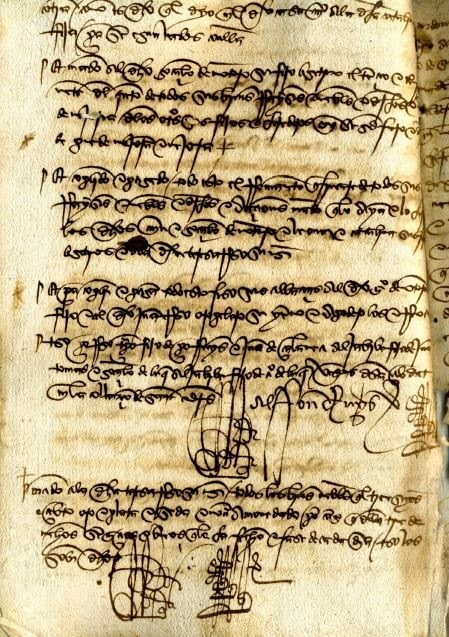
He became known as the "Ropero", or clothes peddler. Trade had a low status in Castilian society, and this trade was particularly low. A tailor could service the aristocracy, and anyone with money would have clothes made-to-order. A seller of used or ready made clothes only serviced those too poor to buy fashionable wear.
He became known as a poet late in life. His first known poems date from the 1440s, when he obtained the patronage of the dominant aristocrat of Cordoba. He became one of the most successful poets of his day, engaging in poetry duels or correspondence with other well-known poets, and leaving a reasonably substantial estate.
Montoro may have stressed his low class and Jewish background partly as a pose. Like jesters, the comic cancioneros poked fun at themselves. Juan Baena, for example, a prominent converso poet, pointed to his physical ugliness and short-stature.1 Montoro's low-class occupation and Jewish background allowed, like a physical defect, for self-deprecating humor.
Montoro often satirized his Jewish descent. In a poem to his wife, he notes that they were well matched as conversos, and that he won the match because she was considered unworthy for any reputable Christian:
"You and I and to have but little worth, we had better both pervert a single house only, and not two. For [wishing] to enjoy a good husband would be a waste of time for you, and an offense to good reason; So I, old, dirty, and meek, will caress a pretty woman."2
As a comic poet of his era, he could be bawdy even by our standards. One of his poems is called, To the Woman Who Is All Tits and Ass (Montoro a Una Mujer Que Todo Era Tetas Y Culo)3. In Montoro to the Woman Who Called Him Jew, his response to what a woman meant as an insult is to refer to her as a sodomite, implying that the mouth that sent out that insult was used to perform oral sex.4
In several poems, without entirely abandoning the satiric voice, he bitterly protested the mistreatment of the conversos. After the attacks on the conversos in Carmona, he addressed King Enrique IV: "What death can you impose on me/That I have not already suffered?"5
The massacre of conversos in his hometown of Cordoba elicited a lengthy and complicated poem to Alonso de Aguilar, the aristocrat who after befriending the conversos deserted them during the attack and then allowed them to be exiled and barred from public office: "Montoro to Don Alonso de Aguilar on the Destruction of the Conversos of Cordoba". The poem begins as a fulsome panegyric to Aguilar, possibly reflecting Montoro's need to continue to live under Aguilar's protection in Cordoba. Only after eight verses of praising Aguilar does Montoro turn to the massacre, noting that after this disaster "it would serve the conversos better to be Jews than Christians."6
By verse 19, he praises the Grandee, and abjectly begs mercy for the conversos: "We want to give you tributes, be your slaves and serve you, we are impoverished, cuckolded, faggots, deceived, open to any humiliation only to survive." In the next verse, Motoro describes himself as "wretched, the first to wear the livery of the blacksmith" (the man who started the anti-converso riots). He pleads for the grandee's mercy, while he remains "starving, naked, impoverished, cuckold, and ailing."7
It has been suggested that this poem is an ironic attack on his former patron. Yet there is no apparent irony in the poem. The main attitude seems to be helpless despair in wake of the destruction of his fellow converts.
His best-known depiction of the plight of the conversos comes in his poem dedicated to Queen Isabel:
"O sad, bitter clothes-peddler [ropero] who does not feel your sorrow! Here you are, seventy years of age, and have always said [to the Virgin]: "you remained immaculate," and have never sworn [directly] by the Creator. I recite the credo, I worship pots full of greasy pork, I eat bacon half-cooked, listen to Mass, cross myself while touching holy waters-- and never could I kill these traces of the confeso.
With my knees bent and in great devotion in days set for holiness I pray, rosary in hand, reciting the beads of the Passion, adoring the God-and-Man as my highest Lord,"8 Yet for all the Christian things I do I'm still called that old faggot Jew.
The epitath at the end of the verse, "puto Judio" is a generic insult, not an imputation of homosexuality—it is the worst insult in the language: "behind the sodomite, bearer of pestilence, is the outline of the converso. They are joined in the worst popular insult that could be hurled: 'faggot Jew!.'. 9 "The English translation of "puto judio" cannot fully convey the pejorative sense of this masculinization of "puta," which figures the Jewish male subject both as a whore and as the passive partner in the homosexual act. " 10
The poem ends with a chilling prediction of the soon to be established auto-da-fe: He asks Queen Isabella, if she must burn conversos, to do it at Christmastime, when the warmth of the fire will be better appreciated.
Montoro evaded the Inquisition. He died soon after writing the poem, probably before the Inquisition came into force. He showed his lack of respect for the Church by leaving it only a nominal sum in his will. His wife was not as fortunate: she was burned as a heretic before April, 1487.11
As an artist, Montoro represents both a dead-end and a harbinger. He was a dead-end because with the imposition of the Spanish Inquisition and the purity of blood laws, conversos after him could no longer proudly point to their Jewish roots. That attitude would lead to being burned to death as a heretic. Converso artists turned instead to secrecy and indirection. It is no coincidence that the two most important works by conversos, La Celestina and Lazarillo de Tormes (both classics of world literature), were both initially published anonymously.
He was a harbinger in that the attitudes he and other cancioneros embraced: irony, irreverence, and the use of low class characters to attack the pretensions of the higher classes, would soon inspire a much more important genre. Picaresque literature came out of the cancionero tradition.12 The picaresque novel, in its turn, was to become part of the foundation of modern literature.
1
Francisco Marquez Villanueva, "Jewish 'Fools' of the Spanish Fifteenth Century",
Hispanic Review
, V. 50, No. 4 (Autumn, 1982), P. 393.
2 Yirmihayu Yovel, "Converso Dualities in the First Generation: The Cancioneros", Jewish Social Studies, V.4, N. 3 (1998), P. 4-5.
3 Montoro, Antón de. Poesía completa. Ed. Marithelma Costa. Cleveland: Cleveland State University Press, 1990., Poem No. 12
4 Ibid, poem No. 10
5 Marquez Villanueva, P. 403.
6 Montoro, Antón de. Poesía completa, P. 23
7 Ibid, P. 29-30
8 Yovel, P. 5-6
9 Barbara Weissberger "A Tierra, Puto!", in Queer Iberia, (Duke University Press, 1999), p. 294
10 Ibid, P. 316
11 Marquez Villanueva, P. 397
12 Victoriano Roncero Lopez, "Lazarillo, Guzman and Buffoon Literature", MLN 116 (2001), P. 237.
This article is adapted from a chapter in my draft history: Jewish Blood, The Tragedy of the Iberian Jews, about the Spanish Heine, Anton de Montoro, who dramatized the plight of the forced converts in 15th Century Spain.
3 notes
·
View notes
Text
Juárez y Chihuahua protagonizan eliminatoria de Esgrima en Juegos Estatales Conade 2023
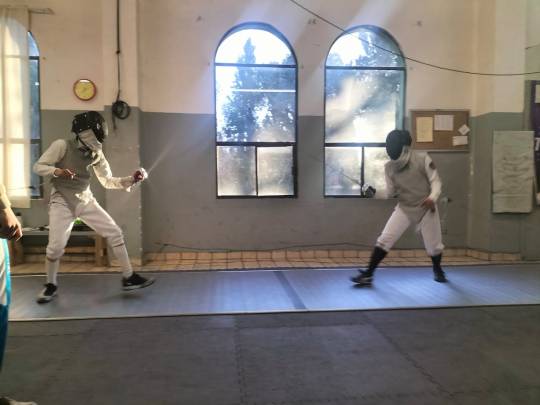
El pasado fin de semana, en las instalaciones del estadio olímpico de la Ciudad Deportiva, se llevó a cabo la esgrima, disciplina perteneciente a la sexta semana de competencias de los Juegos Estatales Conade 2023.
Chihuahua logró 17 medallas de oro, 8 de plata y 13 de bronce, mientras que la delegación de Juárez consiguió 7 preseas doradas, 9 de plata y 5 más de bronce.
En la modalidad de Espada, en la categoría Cadete Mayor Varonil, algunos de los ganadores fueron Jesús Emiliano Barraza Treviño (Chihuahua), Francisco Morales Hernández (Chihuahua), y en tercer lugar los juarenses Eder Rodríguez Miranda y Santiago Álvarez de la Rosa.
Asimismo, en la categoría Mayores Varonil, en la modalidad de Espada, la medalla de oro fue para Rubén Eduardo Barraza Treviño (Chihuahua), plata para Jesús Emiliano Barraza Treviño (Chihuahua) y la tercera posición fue para Alberto Ángel Hernández Ayala (Chihuahua) y Emiliano González Leyva (Juárez).
En otros resultados, en Espada Juvenil Varonil, el primer lugar fue para Mateo Barragán Anchondo (Chihuahua), plata para Christian Alejandro Rodríguez Muñoz (Cd. Juárez) y bronce para Diego Israel Ruíz Carmona representante de la capital del estado.
Resultados
Florete Infantil Olímpico Femenil
Lugar Nombre Municipio
1 Danna Miliany Páez Chihuahua
2 Alexa Kareli Corona Aguirre Juárez
3 María José Aquino Cedillo Chihuahua
Espada Infantil Olímpico Femenil
Lugar Nombre Municipio
1 Danna Miliany Páez Chihuahua
2 Alexa Kareli Corona Aguirre Juárez
3 María José Aquino Cedillo Chihuahua
3 Jimena Domínguez Chihuahua
3 Karla Lazos Chihuahua
Espada Cadete Menor Femenil
Lugar Nombre Municipio
1 Frida María Barraza Treviño Chihuahua
2 Camila Aliceé García Rocha Juárez
Florete Infantil Olímpico Varonil
Lugar Nombre Municipio
1 Santiago Calderón Acosta Juárez
Florete Cadete Menor Femenil
Lugar Nombre Municipio
1 Camila Aliceé García Rocha Juárez
2 Daniela Hernández Rivera Juárez
3 Citlaly Valeria Jiménez Niño Juárez
Florete Cadete Menor Femenil
Lugar Nombre Municipio
1 Camila Aliceé García Rocha Juárez
2 Daniela Hernández Rivera Juárez
3 Citlaly Valeria Jiménez Niño Juárez
Espada Cadete Menor Femenil
Lugar Nombre Municipio
1 Frida María Barraza Treviño Chihuahua
2 Camila Aliceé García Rocha Juárez
Florete Cadete Menor Varonil
Lugar Nombre Municipio
1 Emiliano González Leyva Juárez
2 Christian Giovanny Ramírez Medina Juárez
3 Diego Azcary Peregrino Ramírez Chihuahua
Espada Cadete Mayor Femenil
Lugar Nombre Municipio
1 Eline Alejandra Estrada Martínez Chihuahua
2 Kristel Carely Porras Doran Chihuahua
Florete Cadete Mayor Varonil
Lugar Nombre Municipio
1 Jesús Emiliano Barraza Treviño Chihuahua
2 Eder Rodríguez Miranda Juárez
3 Francisco Morales Hernández Chihuahua
Espada Juvenil Femenil
Lugar Nombre Municipio
1 Danna Cristina Medina Quintero Chihuahua
2 Dafne Paola Peregrino Ramírez Chihuahua
3 Jennifer Natalia Guzmán Burciaga Chihuahua
Florete Juvenil Varonil
Lugar Nombre Municipio
1 Christian Alejandro Rodríguez Muñoz Juárez
2 Mateo Barragán Anchondo Chihuahua
Espada Cadete Menor Varonil
Lugar Nombre Municipio
1 Emiliano González Leyva Juárez
2 Christian Giovanny Ramírez Medina Juárez
3 Liam Paul Urueta Macías Chihuahua
3 Ángel Zahir Ortega Núñez Chihuahua
Espada Infantil Olímpico Varonil
Lugar Nombre Municipio
1 Santiago Calderón Acosta Juárez
2 Pablo Alejandro Zapata Terrazas Chihuahua
3 Ricardo Enrique Chretin Quezada Chihuahua
Florete Infantil A Femenil
Lugar Nombre Municipio
1 Rebeca Naomi Morales Ahumada Juárez
2 Fátima Catalina Barraza Treviño Chihuahua
3 Andrea Corona Aguirre Juárez
Florete Infantil AA Femenil
Lugar Nombre Municipio
1 Carolina Hernández Beltrán Chihuahua
Florete Infantil AA Varonil
Lugar Nombre Municipio
1 Raúl Tadeo López Diaz Chihuahua
Florete Infantil AAA Varonil
Lugar Nombre Municipio
1 Enrique Madariaga Fernández Chihuahua
Sable Infantil Olímpico Varonil
Lugar Nombre Municipio
1 Ricardo Enrique Chretin Quezada Chihuahua
Sable Infantil Olímpico Varonil
Lugar Nombre Municipio
1 Nallely Huerta Silva Chihuahua
Florete Infantil A Varonil
Lugar Nombre Municipio
1 Carlos Alejandro Torres Faudoa Chihuahua
1 note
·
View note
Text
Las noticias (14/3/2019)
Ciudadanos apela a la ley de protección de datos para ocultar si el dirigente dimitido tras el pucherazo sigue de asesor en el Congreso
Defensa incluirá a las asociaciones de la Guardia Civil en la junta de la Seguridad Social militar
El Supremo condena a dos bancos por cargar una deuda al Gobierno de Aragón
(PSOE) Hacienda ‘condena’ a Nadia Calviño, Pedro Duque y Pepu Hernández por “fraude de ley”
Médicos andaluces quieren operar sábados y domingos para aliviar las listas de espera
Otro frente de Abertis con el Gobierno: Sánchez negocia con el PNV transferir la AP-68 a Euskadi
Papel cero: la Junta digitalizará más de 600 trámites para acabar con la burocracia
Vox amplía la petición de datos de empleados de violencia de género a ONG y empresas que trabajan con el Gobierno andaluz
Secesionismo
El Ayuntamiento de Barcelona cuelga otra vez el lazo amarillo retirado esta madrugada
El espionaje belga asegura que su Gobierno no vigiló lo suficiente el caso Puigdemont
El ex secretario general del Diplocat admite pagos a visitantes internacionales
El falso testimonio planea sobre el Supremo antes de la crucial comparecencia de Trapero
EEUU desmiente a los procesados por el 1-O: ninguna ONG les llama "presos políticos"
Identificadas cinco personas por quitar el lazo amarillo del Ayuntamiento de Barcelona
Molons, supuestamente "el tal Toni", rechaza declarar en el juicio del procés
Puigdemont ocultó un informe interno que admitía corrupción masiva en la obra pública
Internacional
El Reino Unido, abocado a retrasar la salida de la UE tras el rechazo de los Comunes a un Brexit sin acuerdo
Los siete puntos negros del asalto a la embajada de Corea del Norte atribuido a la CIA
May agrava el caos con su amenaza: otra votación o sin Brexit por tiempo indefinido
Polémica en Israel: Netanyahu insiste en que vive en un 'estado judío'
Electoral
Ciudadanos da un toque de atención a su candidato en Baleares por rebajar sus críticas a las leyes del catalán
El miedo a la fuga de votos a Vox llega al PP, que teme el peor resultado de su historia
La CUP se fractura y varias escisiones concurrirán a las elecciones generales
'Limpia' de Sánchez en la lista europea del PSOE: salen Blanco, Valenciano y otros seis
Pablo Iglesias margina a Izquierda Unida en su lista a las generales
Refriega por las listas en Asturias y Cantabria: a Casado le sale el 'dedazo' por la culata
(PSOE) Sánchez rompe la 'lista cremallera' en Madrid para colocar a tres ministras y veta a Carmona para el Senado
Un sector de los 'comuns' deja a Colau y negocia con ERC una coalición al Congreso y al Ayuntamiento de Barcelona
Varias federaciones desafían a Ferraz y llevan las candidaturas votadas por la militancia
Caso Cursach
El juez de Cursach oculta un macro-informe policial sobre décadas de corrupción del PP
Caso Erial
La Guardia Civil eleva las comisiones de la red de Zaplana a 12,8 millones
Caso Granados
El Supremo confirma 2 años cárcel a Francisco Granados por aprovecharse de la revelación de secretos en la Púnica
Caso Tandem
BBVA llega a su junta general de accionistas con el caso Villarejo aún sin aclarar
Interior pone escolta al juez del caso Villarejo después de que un extraño entrase en su casa
La Policía 'rescata' dos horas inéditas de la grabación de Villarejo a la ministra y Garzón
1 note
·
View note
Photo

Moving out season ✨ “He who dwells in the shelter of the Most High will abide in the shadow of the Almighty. I will say to the Lord, “My refuge and my fortress, my God, in whom I trust.”” Psalm 91:1-2 ESV “I lift up my eyes to the hills. From where does my help come? My help comes from the Lord, who made heaven and earth. He will not let your foot be moved; he who keeps you will not slumber. Behold, he who keeps Israel will neither slumber nor sleep. The Lord is your keeper; the Lord is your shade on your right hand. The sun shall not strike you by day, nor the moon by night. The Lord will keep you from all evil; he will keep your life. The Lord will keep your going out and your coming in from this time forth and forevermore.” Psalm 121:1-8 ESV Actually - sa sobrang busy ng life, hindi na ako nakapagcompose ng anything about this moving out season. I am used to writing mahabang write ups to share my feelings to a certain season. I am grateful for this blessing and at the same time, I am sad to leave the place where I grew up and where I spent almost all my life. This place will always be a home. 🤍 One hour away lang naman! Ipon muna ako ng millions to buy a new house here. 🤭 I will miss Franceville once more. I will miss Bulihan. I will miss GMA and Carmona, our neighbors. 🤍 Pero sabi ng kapatid ko - “sa una nakakalungkot naman talaga. Imagine that you are leaving a place na buong buhay mo andun ka na. Pero - at some point in time, masasanay ka din. Kasi dun sa bagong lugar you will create new memories.” Leaving your comfort zone may mean GROWTH. Progress. Something new. ✨ And it hit me to the core. Kaya ayokong magdwell that we are leaving this place for good. Because I know that GOD IS AHEAD of us at mas maraming positive kesa sa what ifs and lungkot ko. ✨🤍 After so many years na nahirapan kami esp after nawala ni Mama. At the of the day - I am reminded - that the new house is a DREAM came true. A FAITH GOAL checked. An answered PRAYER. Thank You, Jesus. Syempre babalik pa din kami sa November since andito sina Mama and Uncle. 🤍✨ to be continued… ✨🤍🏠 https://www.instagram.com/p/CiGyAB2pODOu8d63eR74f6SWiP87LnBKpYqh100/?igshid=NGJjMDIxMWI=
0 notes
Text
Everyone’s heard of Comic Con be it the San Diego or New York editions, for the non-comic geeks or book nerds there’s ReedPOP’s other pop culture offsprings Book Expo America and Book Con. These two events combine over five days, May 30th to June 3rd, in New York City to give readers a glimpse at upcoming books and a chance to meet their favorite authors.
To be clear the first three days, Book Expo America or BEA, are more for industry folks, giving them a chance to chat and politik, like I did, look for upcoming book reviews as soon as I get a chance to power through my book haul. The last two days, Book Con is for the fans to get a chance to grab autographs and also learn about books on the horizon, and snag some discounted books, I spent a bit more than I needed too.
What follows are my 3 highlights, which can different from someone else’s, so please be kind as I went to panels that sparked my interests.
Day 1 is more for signing in but I was able to squeeze in my first panel, The Graphic Novels You Can’t Miss of 2018, moderated by Publishers Weekly’s Calvin Reid gave me a heads up on a gang of graphic novels that cover several genres; a memoir by David Small (Home After Dark), a new take on food by Blue Delliquanti (Meal), sports stories by Ngozi Ukazu (Check, Please!) and more sci-fi from the mind of Tim Fielder (creator of Matty’s Rocket).
On day 2, for whatever reason, odds are my Mom and her politicking, I’ve been in rooms with Congress people and Mayors before, but never a living legend like Congressman John Lewis and I was one of the lucky ones to meet him, Afua Richardson, and Andrew Aydin as they signed samplers of their new book Run.
My last panel for the Con on day 5 was PBS’s The Great American Read with authors Glynnis MacNicol, Yahdon Israel, Veronica Roth, Daniel Jose Older, and host host Lindsay Ellis. This literary showdown pitted American classics against each other in preparation for the eight-part series that explores 100 best-loved American novels chosen from a national survey. I still can’t believe that Harry Potter was the winner of our panel event. To vote or for more information go to PBS.
Of course there were other great panels, filled with authors who were gracious with their wit and insight in a carnival like space with a few Cosplayers, but if you’re a book lover like me you need to find your way to one of these amazing gatherings of book nerds.
George Carmona 3rd is an Artist/Writer, former Milestone Media Intern, former DC Comics paper pusher, lifelong comic geek and book lover. He is also the author of DC Super Friends Joke Book from Penguin Random House. You can find his work at FistFullofArt.com or follow him on twitter at GCarmona3.
Five Days of Books. Book Expo America and Book Con 2018 #comics #books Everyone’s heard of Comic Con be it the San Diego or New York editions, for the non-comic geeks or book nerds there’s…
#BEA#book expo#book expo america#BookExpo#books#cosplay#GreatReadPBS#Publishing#reedpop#The Book Con#The Great Read America#TheBookCon
4 notes
·
View notes
Text
Liberan a jóvenes acusados de supuesto ataque a Fiscal de Morelos
Liberan a jóvenes acusados de supuesto ataque a Fiscal de Morelos
Israel y Javier, jóvenes detenidos por el supuesto ataque al fiscal de Morelos, Uriel Carmona Gándara, fueron liberados por inconsistencias en las declaraciones por parte de los escoltas involucrados. La audiencia contra los dos jóvenes acusados de haber atacado a escoltas del Fiscal en la autopista México-Acapulco se realizó luego de quefue diferida, ya que los abogados de los muchachos no…

View On WordPress
0 notes
Text
Cap 143 : Nuestros Genes Levantinos : Fenicio Cartaginés Cananeo Judío
.
Aquí referencio Publicaciones muy serias. Esto seguramente será corregido y cambiado con el Tiempo. Yo no soy Historiador, Arqueólogo o Genetista. No soy Científico de nada, sinó solo un Aficionado, Diletante, Gomoso, Hobbyst.
.
En el siguiente Mapa ves la Frecuencia del Haplogrupo T que se suele asociar con el Medio Oriente, o sea los Levantinos. Los Fenicios son los mismos Cananeos, llamados así por los Griegos, pero son indistinguibles, los Judíos parecen ser los mismo Cananeos según un Consenso Científico y Genético que se va imponiendo. Los Cartagineses son los mismos Hijos de los Fenicios.
Se piensa que el Haplogrupo T del Cromosoma Y masculino se esparció por el Mediterrano gracias a los Fenicios, Cartagineses, Judíos y a los Arabes que permanecieron en España por muchos Siglos.
.

.
Haplogroup T is one of the most widely dispersed paternal lineages in the world. In Europe, it makes up only 1% of the population on most of the continent, except in Greece, Macedonia and Italy where it exceeds 4%, and in Iberia where it reaches 2.5%, peaking at 10% in Cadiz and over 15% in Ibiza. The maximal worldwide frequency for haplogroup T is observed in East Africa (Eritrea, Ethiopia, Somalia, Kenya, Tanzania) and in the Middle East (especially the South Caucasus, southern Iraq, south-west Iran, Oman and southern Egypt), where it accounts for approximately 5 to 15% of the male lineages.
...................
Ancient civilisations associated with Y-haplogroup T
During the Copper and Bronze Ages haplogroup T would have been an important (though probably not dominant) lineage among ancient peoples such as Sumerians, the Babylonians and the Assyrians.
The higher than average frequencies of haplogroup T in places like Cyprus, Sicily, Tunisia, Ibiza, Andalusia and the northern tip of Morocco suggest that haplogroup T could also have been dispersed around the Mediterranean by the Phoenicians (1200-800 BCE), and that ancient Phoenicia seemingly had a higher incidence of T than Lebanon does today (5%).
.
Fuente : Eupedia - Haplogroup T - Geographic Distribution
https://www.eupedia.com/europe/Haplogroup_T_Y-DNA.shtml?
************************************
.
Distribución del Haplogrupo T (ADN-Y)
Europa: Encontramos la frecuencia más importante en la isla de Quíos (Grecia) con 25%,5? en los sicilianos de Sciacca con 17.9%, en Ibicencos 16.7%, en tiroleses de Stilfs 13.5%, en Cádiz 10.3%, en cretenses de Lasithi 8.7%, en lebaniegos de Liébana 8.1%, en portugueses de Vila Real 7.7%, en serbios 7.4%, en aragoneses 6%, en corsos 6%, en extremeños 6%, en Gotland 5%, en asturianos 5% y menores frecuencias en Italia, Estonia, Grecia, Iberia, Suecia, Francia y poco en Rusia.
Cáucaso: Especialmente en los lezguinos de Daguestán con 28%.6? También en osetios, en Chechenia, Azerbaiyán y Armenia.
Cercano Oriente: En Omán 8%, Irak 7%, Emiratos Árabes Unidos 5%, Líbano 5%, y menores frecuencias Irán, Turquía, Israel, Jordania y Arabia Saudita.
https://es.wikipedia.org/wiki/Haplogrupo_T_(ADN-Y)
.
************************************
Próxima Imagen : Reconstrucción Facial de un Esqueleto de un Cementerio en el Antiguo Cartago, vivió 500 Años antes de Cristo. Es un Hombre de 25 Años y el Examen Genético revela que tiene Ancestros Europeos probablemente Ibéricos.
.

.
Madrid, 25 may (EFE).- Un equipo internacional de científicos ha secuenciado el genoma mitocondrial del "hombre joven de Byrsa" o Ariche, un fenicio fallecido hace 2.500 años y cuyo ADN ha demostrado que sus ancestros procedían de algún lugar de la costa norte del Mediterráneo, probablemente de la península Ibérica.
El "hombre joven de Byrsa" fue descubierto por casualidad hace veinte años durante una excavación en la necrópolis de Byrsa, antigua ciudad de Cartago, y actualmente parte del área metropolitana de Túnez.
Este hombre, también bautizado como Ariche, que significa el hombre deseado, tenía entre 19 y 24 años, era robusto, medía cerca de 1,70 metros y probablemente falleció de forma accidental.
Dado que fue enterrado con gemas, escarabajos, amuletos y otros artículos, los paleontólogos creen que pudo pertenecer a la elite cartaginesa.
Estudio desvela que fenicios de Cartago procedían de costa norte mediterránea
https://www.lavanguardia.com/vida/20160525/402043903638/estudio-desvela-que-fenicios-de-cartago-procedian-de-costa-norte-mediterranea.html
.
************************************
.
Genética Fenicia que dejaron en Iberia
Entre los años 1200 y 539 a. C., los fenicios construyeron un vasto imperio comercial desde su tierra natal levantina a lo largo del sur del Mediterráneo hasta Andalucía. La ciudad más antigua de Iberia es Cádiz, que fue fundada por los fenicios como Gadir o Agadir en 1104 a. Los fenicios también fundaron Almuñécar, Málaga, Cartaya y Huelva, y se establecieron en otras ciudades existentes como Tartessos y Carmona.
Según los haplogrupos encontrados en el Líbano moderno y en sus antiguas colonias, los fenicios parecen haber transportado una mezcla de haplogrupo J2a, J1, E1b1b, G, R1b-M269 / L23, T, L, R1b-V88, R2. y Q1b, aproximadamente en ese orden de frecuencia. No es fácil evaluar el porcentaje de linajes ibéricos modernos de origen fenicio porque muchos otros pueblos trajeron haplogrupos similares. Los linajes fenicios más singulares, que normalmente no se encontraban entre los antiguos griegos y romanos, son Q1b, R1b-V88 y R2. Y, de hecho, todos ellos se han encontrado, principalmente en Portugal y en el suroeste de Andalucía, pero solo a frecuencias mínimas (menos del 0,5%).
La isla de Ibiza fue otra importante colonia fenicia, que tiene la particularidad de haber quedado aislada durante la mayor parte de su historia posterior. Por lo tanto, es probable que tenga más linajes fenicios que el promedio. Ese es probablemente el caso como Adams et al. (2008) encontraron el 17% de haplogrupo T en Ibiza, con mucho el porcentaje más alto en Europa para el linaje del Medio Oriente, pero también 13% de haplogrupo G (más que en cualquier otro lugar en Iberia) y 4% de E-M123, la variedad levantina de E1b1b.
No es sorprendente que el segundo porcentaje más alto de haplogrupo T identificado en Iberia se encuentre en Cádiz (10%). Al igual que el haplogrupo T, E-M123 se encuentra principalmente en Murcia, Andalucía, Extremadura y Portugal, lo que sugiere que aquí es donde los fenicios tuvieron el mayor impacto genético. No es sorprendente que los haplogrupos J1 y J2a también tengan un pico en estas regiones.
.
Fuente : Eupedia
Historia genética de los españoles y portugueses
https://www.eupedia.com/genetics/historia_genetica_de_iberia.shtml?
.
************************************
.
Siguiente Imagen : El Haplogrupo E-M123 puede haber sigo transportado por los Fenicios durante su Epoca gloriosa en el Mediterraneo. Ver que mas arriba en esta Página se dice “Al igual que el haplogrupo T, E-M123 se encuentra principalmente en Murcia, Andalucía, Extremadura y Portugal.”
.

.
The hotspot in Spanish Extremadura may have something to do with the major Roman colony of Merida. But that alone wouldn't explain the overall higher frequency in western Iberia, mimicking those of E-M81 and E-V13. Western Iberia is really special in having a lot of the three main E1b1b subclades, despite the fact that the three have very different distributions.
.
Fuente : Eupèdia - Thread: New distribution map of haplogroup E-M123
https://www.eupedia.com/forum/threads/29108-New-distribution-map-of-haplogroup-E-M123
.
************************************
.
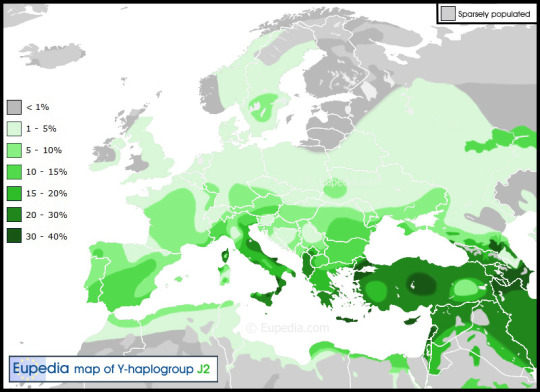
.
Quite a few ancient Mediterranean and Middle Eastern civilisations flourished in territories where J2 lineages were preponderant. This is the case of the Hattians, the Hurrians, the Etruscans, the Minoans, the Greeks, the Phoenicians (and their Carthaginian offshoot), the Israelites, and to a lower extent also the Romans, the Assyrians and the Persians. All the great seafaring civilisations from the middle Bronze Age to the Iron Age were dominated by J2 men.
..............
The Phoenicians, Jews, Greeks and Romans all contributed to the presence of J2a in Iberia. The particularly strong frequency of J2a and other Near Eastern haplogroups (J1, E1b1b, T) in the south of the Iberian peninsula, suggest that the Phoenicians and the Carthaginians played a more decisive role than other peoples. This makes sense considering that they were the first to arrive, founded the greatest number of cities (including Gadir/Cadiz, Iberia's oldest city), and their settlements match almost exactly the zone where J2 is found at a higher frequency in southern Andalusia.
.
Fuente : Eupedia - Haplogroup J2 (Y-DNA)
https://www.eupedia.com/europe/Haplogroup_J2_Y-DNA.shtml?
.
************************************
.

.
All three branches of J1-L858 (S640, YSC76 and FGC11) are found in Europe, principally in Spain, Italy, central and eastern Europe. Their relatively recent time of divergence with their Middle Eastern cousins (Late Bronze Age to Iron Age) suggests that they would have arrived with the Phoenicians (Sicily, Sardinia, Spain), and later in greater numbers with the Jewish diaspora. Spain and Portugal have the highest percentage of FGC12 in Europe, but this amounts to about 12% of J1 lineages, i.e. less than 0.5% of the population, suggesting that the Arabs had a much smaller genetic impact on the Iberian population than the Jews and the Phoenicians.
.
Fuente : Eupedia - Haplogroup J1 (Y-DNA)
https://www.eupedia.com/europe/Haplogroup_J1_Y-DNA.shtml
.
0 notes
